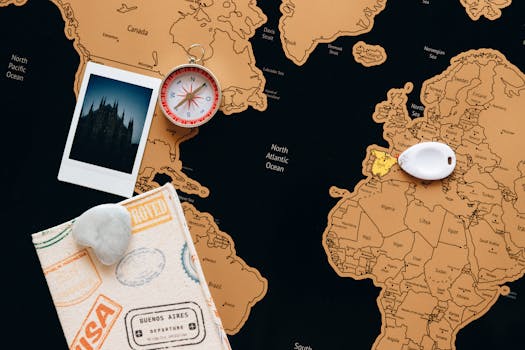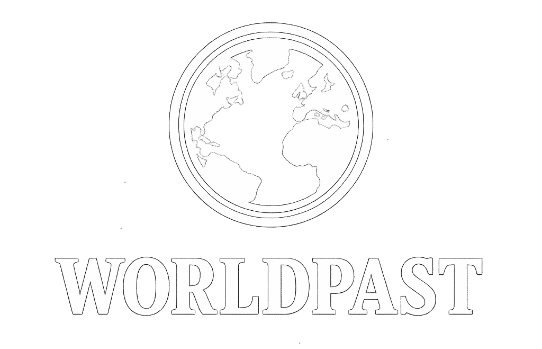Introduction
The Discovery of America Beginning Finding America is one of the most important things that has ever happened to people. It was the start of a new time of exploration, colonization, cultural exchange, and, in the end, the birth of the modern Western Hemisphere.
Christopher Columbus never thought that his trip in 1492 under the Spanish crown would open the gates to the New World. This article talks about the historic voyage, what happened as a result, and how this important moment in world history still affects us today.
Table of Content
- The Americas before Columbus
- The Age of Discovery Starts
- Columbus sails in 1492
- The First Meeting: Europeans and Native Americans
- The Columbian Exchange
- Other explorers who helped make America
- Colonization and the Formation of New Societies
- The Effect on World History
- Controversy and Legacy
- The United States After the Discovery
- Conclusion

The Americas before Columbus
Before Columbus came, America was home to many advanced civilizations, such as the Maya, Aztec, and Inca, as well as hundreds of Native American tribes. These cultures had a lot of different languages, traditions, and ways of knowing things.
Main Points:
- The Inca Empire covered what is now Peru and Chile.
- The Aztecs built Tenochtitlán, a beautiful city that is now Mexico City.
- Indigenous people were good at farming, astronomy, and building things.
These societies had complicated political systems and busy trade networks. In North America, the Mississippian culture built big mound cities like Cahokia.
This shows that advanced societies existed in places other than Central and South America.
The Age of Discovery Starts
The Age of Exploration began in Europe in the late 15th century because of:
- The quest for novel trade pathways to Asia
- The growth of Christianity
- A desire for money, land, and power
Portugal was the first country to send ships around Africa. But Spain paid for the most ambitious mission: sailing west across the Atlantic.
The caravel and better navigation tools like the astrolabe and compass made sea voyages longer and safer, which opened up new areas for maritime exploration.
Columbus sails in 1492
On August 3, 1492, Columbus left Palos de la Frontera with three ships: the Niña, the Pinta, and the Santa María. After weeks of not knowing what would happen, land was finally seen on October 12, 1492.
Important Information:
- Columbus thought he had made it to Asia.
- He landed in the Bahamas, not mainland America.
- The start of European colonization was when he came.
Columbus went on four trips in all, during which he explored parts of the Caribbean, Central America, and South America. He never made it to North America, but his travels sparked a lot of interest and conquest by European powers.
The First Meeting: Europeans and Native Americans
The meeting between Europeans and native peoples was historic, but it was also sad. At first, the two groups were interested in trade and each other, but it quickly turned into war and conquest.
Impact:
- Diseases like smallpox killed a lot of native people
- War and slavery led to a lot of deaths and people being forced to move
- Settlers from Europe took large areas of land for Spain, France, and England
Many indigenous communities were either killed off or forced to live under colonial rule within a few decades. Genocide of cultures and forced conversions made native ways of life even weaker.
The Columbian Exchange
A Change for the Whole World The Columbian Exchange is the movement of ideas, plants, animals, and goods between the Old World and the New World.
Exchanges that change things:
- From the United States: corn, potatoes, tomatoes, tobacco, and cocoa
- From Europe: horses, cows, wheat, and deadly diseases
This trade changed agriculture, diets, economies, and cultures all over the world. New food sources made European populations grow, but disease killed off many Native populations.
Other explorers who helped make America
what it is today Columbus is often credited with finding America, but other explorers also made important discoveries
For example:
- John Cabot (England) explored the North American coast in 1497.
- Amerigo Vespucci figured out that these were new continents, not Asia.
- Hernan Cortés took over the Aztecs in 1521.
- In 1533, Francisco Pizarro beat the Inca Empire.
The name “America” comes from Amerigo Vespucci, who made maps that showed the new lands were a separate continent. The first European to see the Pacific Ocean from the Americas was Vasco Núñez de Balboa. This showed how big and wide the “New World” was.
Colonization and the Formation of New Societies
By the 1600s, European countries had split the Americas into pieces. Spain, Portugal, England, France, and the Netherlands all set up colonies that would eventually become modern countries.
The effects of colonization:
- The founding of colonial cities such as Lima, Quebec
- Jamestown Christianity spread through churches and missions
- Cultural blending: traditions from Africa, Europe, and the Americas came together
Colonies became richer, but indigenous people and African slaves were the ones who suffered the most from exploitation. This is where modern racial and economic inequality began.
The Effect on World History
Finding America Changed world maps and moved trade around the world.
- Gave rise to European imperialism and the slave trade across the Atlantic
- It started the colonization of the Americas
- Set the stage for the growth of Canada, the United States, and Latin America
The discovery also began the Age of Globalization, when people, goods, and ideas moved across oceans more easily than ever before.
Controversy and Legacy
There is a lot of disagreement about the phrase “discovery of America” these days.For thousands of years, Native Americans lived on the continent .Because of this, many people want a more open-minded view that honors the histories of indigenous people.
Contemporary Viewpoints:
- In many places, Columbus Day is not celebrated; instead, Indigenous Peoples’ Day is.
- History now emphasizes the intersection of cultures rather than mere discovery.
- Scholars emphasize the resilience and contributions of indigenous peoples. Columbus’s legacy is complicated.
He was a brave navigator, but he also oversaw brutal practices as a colonizer. To remember history in a fair way, we need to know the whole truth.
The United States After the Discovery
The centuries following Columbus’s voyage saw revolutionary changes:
- The American Revolution brought about the first modern democracy.
- The wars of independence in Latin America broke the chains of colonialism.
- Ongoing struggles for civil rights and the rights of indigenous people continue to shape the Americas.
Modern America is a mosaic of cultures, shaped by centuries of migration, colonization, resistance, and resilience. Its origins lie in both great achievements and great tragedies.
Conclusion
The discovery of America in 1492 was not just about new lands but a monumental turning point in world history. It brought continents together in ways that changed economies, societies, and cultures forever. While Columbus’s journey is legendary, the full story must include the voices of Native Americans whose lives and lands were forever altered. As we look back today, it’s important to honor all sides of this shared and often painful legacy.
The story of America’s discovery is one of courage, curiosity, conquest, and consequence—a story that continues to shape our world in the 21st century.
Understanding this chapter of history allows us to recognize the patterns of colonization, appreciate cultural diversity, and strive for a more equitable future for all Americans—north, south, and central.
